Celebrate the Caribbean Endemic Bird Festival (CEBF) with us in our virtual “From the Nest” edition! Have fun learning about a new endemic bird every day. We have colouring pages, puzzles, activities, and more. Download for free and enjoy nature with your family at home.
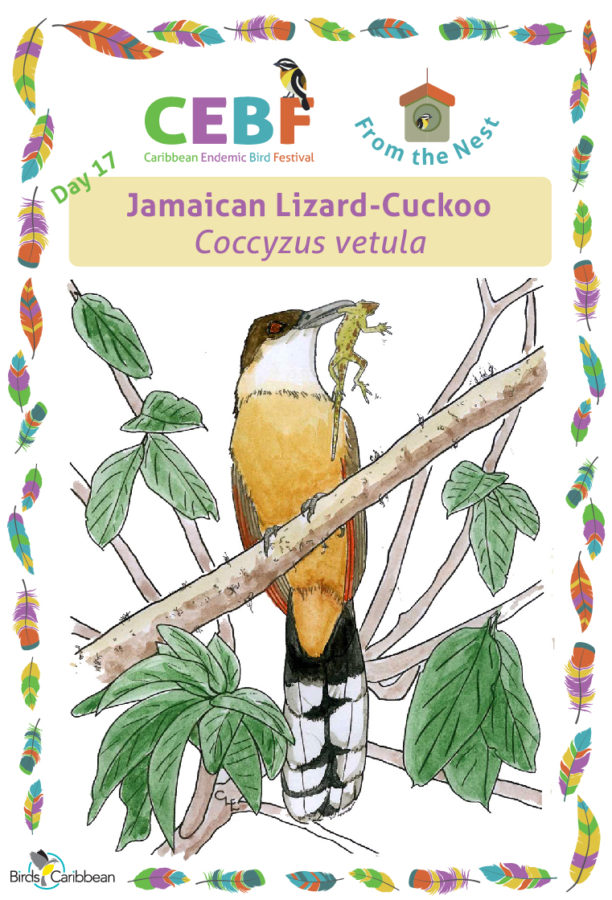
Endemic Bird of the Day: Jamaican Lizard-Cuckoo
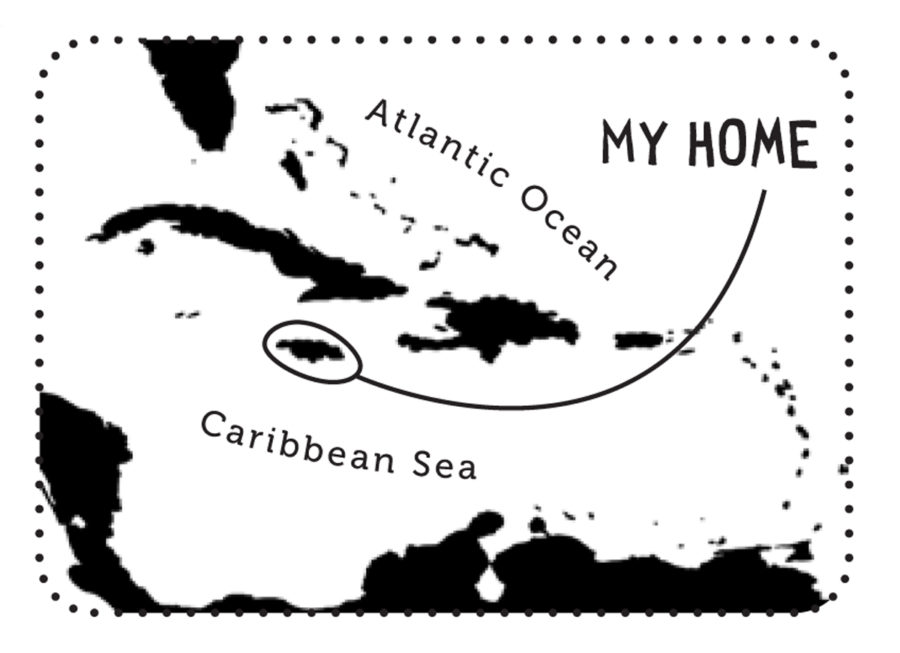
How do birds get their names? Take the case of Jamaican Lizard-Cuckoos. They are definitely Jamaican, for they are found nowhere else in the world. They in no way resemble lizards but they do dine on lizards, and it is this that gives them their middle name. Their last name is “Cuckoo”, which some people find surprising because unlike the European Cuckoo, and like most other New World Cuckoos, they build their own nests—rough platforms of sticks high in the forest canopy.
Many millions of years ago, the New World Cuckoo ancestors of the Jamaican Lizard-Cuckoo flew across the ocean from the mainland to the Caribbean. There they found islands with an abundance of lizards. Mammalian predators were absent—so birds like the lizard cuckoos evolved to take their place. Today, Jamaica, Cuba, Bahamas, Hispaniola, and Puerto Rico all have their own endemic species of lizard-cuckoos.
This spectacular group of birds specializes in eating lizards in the forest canopy. They also eat small birds, eggs and insects. They all have long straight bills; large dark eyes surrounded by brilliant red orbital skin; pale throats; rufous patch on the primary wing feathers, and pale reddish-brown underparts; but their most distinctive features are their long dark tails with large, paired, white spots along the edges. They use them for balance and fan them wide in mating displays.
The behaviour of Jamaican Lizard-Cuckoos is unmistakable – look for them running up branches in the canopy, like very large rats or squirrels, or gliding silently between trees with wings and tails spread out. They can be hard to see in their leafy forest habitats but their calls are loud and distinctive—like the rapid sound of a machine gun being fired. They are generally solitary. They may come out to feed before or after rain; thus they are sometimes called Rain Birds.
Few Jamaicans think of these birds as Jamaican Lizard-Cuckoos, rather as Old Woman Birds. Country people say that they sound like old women nagging. The (probably male) scientists who named them seem to have agreed—because they gave them the scientific name Coccyzus vetula. Coccyzus is Latin for cuckoo, and vetula means old woman! Birds get their names in many ways—and some of them are not politically correct.
Learn more about this species, including its range, photos, and calls here.
Colour in the Jamaican Lizard-Cuckoo!
Download the page from Endemic Birds of the West Indies Colouring Book. Use the drawing above or photo below as your guide, or you can look up pictures of the bird online or in a bird field guide if you have one. Share your coloured-in page with us by posting it online and tagging us @BirdsCaribbean #CEBFfromthenest
Listen to the call of the Jamaican Lizard-Cuckoo
The Jamaican Lizard-Cuckoo’s call is a trailing, low, rapid cak-cak-cak-ka-ka-ka-k-k.
Puzzle of the Day
Click on the image below to do the puzzle. You can make the puzzle as easy or as hard as you like – for example, 6, 8, or 12 pieces for young children, all the way up to 1,024 pieces for those that are up for a challenge!
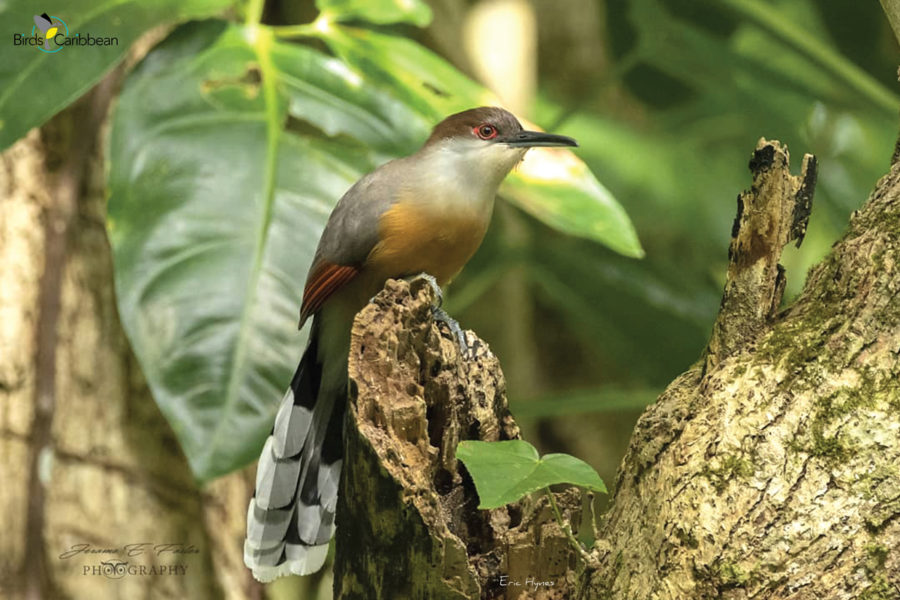
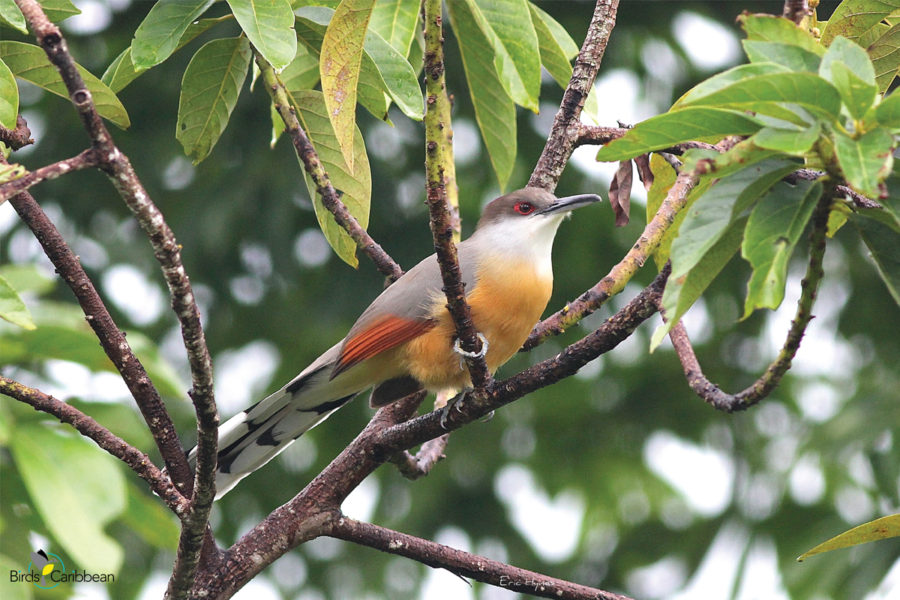
Activity of the Day
FOR KIDS & ADULTS:
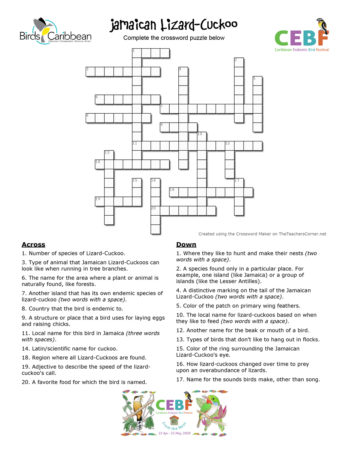 Complete our Jamaican Lizard-Cuckoo Crossword Puzzle! How many words do you know? Be sure to read about the Jamaican Lizard-Cuckoo, our Endemic Bird of the Day, for clues to the puzzle. If you need help, also check out our Glossary for some definitions that will help you complete this puzzle. And here is a the Answer Key to the puzzle.
Complete our Jamaican Lizard-Cuckoo Crossword Puzzle! How many words do you know? Be sure to read about the Jamaican Lizard-Cuckoo, our Endemic Bird of the Day, for clues to the puzzle. If you need help, also check out our Glossary for some definitions that will help you complete this puzzle. And here is a the Answer Key to the puzzle.
